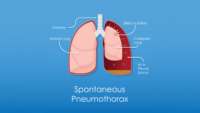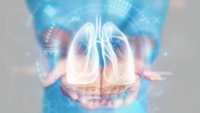Nearly everyone gets occasional heartburn, but frequent heartburn may indicate gastroesophageal reflux disease (GERD). In this condition, a muscle ring at the bottom of the esophagus, called the lower esophageal sphincter (LES), closes improperly. This allows gastric contents to reflux into the distal esophagus.
Normally, a food bolus travels in one direction only. Once the bolus is swallowed, the LES relaxes, the bolus passes into the stomach, and the LES constricts.
But with improper LES closure, highly acidic gastric contents may leak back into the esophagus, where they may damage the esophageal lining. Normally, the esophagus has a pH of about 7.0, whereas the stomach pH is approximately 4.0. With repeated esophageal exposure to gastric contents, a burning sensation occurs in the chest or throat.
Occasionally, repeated exposure to gastric contents leads to Barrett’s esophagus, in which the esophageal lining undergoes metaplasia (tissue damage). Metaplasia, in turn, increases the risk of esophageal cancer.
Risk factors
Factors that can predispose a person to LES relaxation and subsequent reflux include:
- LES weakness
- hiatal hernia
- delayed gastric emptying
- such foods and beverages as caffeine, chocolate, peppermint, alcohol, and garlic
- large meals
- a high-fat diet
- medications that reduce LES pressure, such as calcium channel blockers, nitrates, non-steroidal anti-inflammatory drugs, and anticholinergics
- smoking, which weakens the lower esophageal muscles.
Opioid dependency and certain medical conditions (such as diabetes mellitus, hypothyroidism, scleroderma, and gastroparesis) decrease GI motility and may precipitate or worsen GERD symptoms. Obesity puts added external pressure on the abdominal contents and may contribute to or exacerbate reflux symptoms. Sometimes, the cause of GERD is never identified.
Signs and symptoms
GERD manifestations result directly from gastric acid reflux into the esophagus. Pyrosis, the classic symptom, is a substernal burning sensation typically described as heartburn. It may be accompanied by regurgitation, particularly in someone who has recently eaten.
Other common esophageal symptoms include:
- foul taste
- sensation of burning fluid in the pharynx
- nausea (especially in the morning)
- constant belching or eructation.
Worsening of symptoms when the patient is recumbent or bent over strongly suggests GERD, as do symptoms that keep the patient awake at night.
Cardiac disease must be ruled out in patients complaining of substernal discomfort. Although GERD pain typically radiates, pain radiating beyond the anterior chest probably stems from another cause.
Extraesophageal symptoms
In some cases, gastric acid refluxes far enough into the pharynx to produce extraesophageal symptoms. For this reason, suspect GERD in a patient who has a chronic cough without an obvious cause (such as chronic obstructive pulmonary disease, lung cancer, or heart failure). Other extraesophageal symptoms may include chronic sore throat, chronic throat clearing, or chronic hoarseness, particularly in the morning.
Asthma exacerbations or asthma that doesn’t respond to conventional therapies may result from reflux in which gastric acid irritates the vocal cords, cough centers, posterior pharynx, and bronchial smooth muscle. Commonly, extraesophageal symptoms are most severe in the morning because reflux increases overnight.
Dangerous symptom cluster
A cluster of symptoms—bleeding, odynophagia (painful swallowing), weight loss, early satiety, and dysphagia—may signal a more serious or emergent disease, such as cancer. Refer a patient with this cluster to a gastroenterologist immediately.
Diagnosis
GERD may be diagnosed from symptoms alone. Some patients have highly suggestive symptoms without esophageal mucosal damage; others are asymptomatic but have endoscopic evidence of metaplasia. The combination of suggestive symptoms and endoscopic changes is highly specific (97%) for GERD.
Patients with typical uncomplicated symptoms are diagnosed clinically and started on an empiric trial of proton pump inhibitors (PPIs). Those who respond to PPIs don’t need further diagnostic testing but do require periodic follow-up, with evaluation and treatment modified as indicated by changing circumstances.
In some cases, a GERD diagnosis may be a clue to another underlying medical condition, such as hiatal hernia, gastroparesis, or diabetes mellitus.
Endoscopy
If empiric PPI therapy fails, more definitive diagnostic testing is required. Endoscopy, which permits direct visualization of the esophageal mucosa, is the preferred study for diagnosing Barrett’s esophagus and esophagitis; presence of either condition confirms GERD. However, a normal endoscopic examination doesn’t rule out GERD.
Ambulatory esophageal pH monitoring
In ambulatory esophageal pH monitoring, a small probe is inserted nasogastrically and attached to a small computer that the patient wears for 24 hours while keeping a diary of activities and ingestion. This test is useful for symptomatic patients with normal endoscopic findings—especially when the diagnosis is unclear even after empiric therapy. It’s the most accurate test for assessing reflux and can yield useful information about GERD severity, pattern, frequency, and duration.
Management
GERD management includes lifestyle modifications, patient-directed therapy, acid suppression, and promotility drugs (agents that increase GI motility). Acid suppression, the mainstay of therapy, can range from self-directed use of over-the counter (OTC) medications to twice-daily, high-dose PPI regimens.
Rarely, patients may require endoscopic treatment or surgery; those refractory to medical management may benefit from surgical fundoplication. Endoscopic intervention isn’t indicated for refractory patients but is being investigated as an alternative for patients who respond incompletely to PPI therapy or whose symptoms recur after an initial response.
Lifestyle modifications
Lifestyle modifications must be made carefully, because they’re likely to fail if the patient tries to make too many changes too quickly. Working together, the clinician and patient should review the patient’s current lifestyle habits, identify those that may contribute to GERD, and make realistic changes.
Managing episodic symptoms
Patient-directed therapy usually is appropriate for patients who experience pyrosis no more than once or twice weekly or whose symptoms are predictable (for instance, occurring after a large or fatty meal or other known triggers). In such therapy, the patient takes OTC acid suppressants, such as histamine2-receptor antagonists, PPIs, and antacids, as needed. Instruct the patient to contact the primary care provider if symptoms grow more frequent or the BOWED symptom cluster develops.
Managing continuous or chronic symptoms
Patients with continuous or chronic symptoms should be managed by a primary care provider. Therapy hinges on acid suppression with a prescription-strength PPI to promote symptom control and healing of esophagitis.
PPIs are best taken in a single dose before meals. Although some patients with nocturnal symptoms get better results when they take a PPI before dinner, most gain maximal benefit if they take it before breakfast.
Patients who don’t respond to standard daily dosages of PPIs, whose symptoms are predominantly extraesophageal, or who have severe esophageal dysmotility or Barrett’s esophagus may require higher-than-recommended PPI dosages. Instruct patients taking such dosages to divide the daily dose and take half before breakfast and the other half before dinner.
Promotility agents, such as metoclopramide and baclofen, increase forward movement of gastric contents and may reduce esophageal reflux symptoms. Unfortunately, promotility therapy options are limited and none of the available agents is acceptable as monotherapy. However, selected patients who don’t respond to acid suppression may receive a combination of acid suppressants and promotility agents. They should be managed by a gastroenterologist, as should patients with severe esophageal dysmotility or Barrett’s esophagus.
Surgical treatment
Surgical fundoplication is an option for patients who are refractory to the most aggressive medical therapies. However, although surgery can reduce reflux, some patients have reported onset of a new symptom cluster—excessive gas, bloating, eructation, and dysphagia—afterward. Thus, it’s reserved for highly select patients.
Helping your patient cope with GERD
GERD sometimes goes unrecognized because many people assume heartburn is normal. Refer patients with persistent heartburn or other GERD symptoms to their primary care provider for evaluation.
Encourage patients who’ve been diagnosed with GERD to keep taking prescribed medications and maintain lifestyle recommendations even after symptoms are under control. Instruct them to see a primary care provider for regular follow-up.
Selected references
Davis R, Miller S. A practical review of the diagnosis and treatment of GERD. GERD Education Alliance. Available at: www.gerdstoptheburn.com/resources/. Accessed April 28, 2007.
DeVault K, Castell D. Updated guidelines for the diagnosis and treatment of gastroesophageal reflux disease. Am J Gastroenterol. 2005;100:190-200.
Mujica V, Rao S. Recognizing atypical manifestations of GERD: asthma, chest pain, and otolaryngologic disorders may be due to reflux. Postgrad Med. 1999;105(1):53-55, 60, 63-66.
Richter J. Gastroesophageal reflux disease in the older patient: presentation, treatment, and complications. Am J Gastroenterol. 2000;95:(2):366-373.
Sampliner R. Updated guidelines for the diagnosis, surveillance and therapy of Barrett’s esophagus. Am J Gastroenterol. 2002;97:1888-1895.
For a complete list of selected references, see June 2007 references.
Sally K. Miller, PhD, APN, FAANP, is Assistant Professor and Chair of the Department of Physiologic Nursing at the School of Nursing at the University of Nevada, Las Vegas.


















1 Comment.
I never knew that GERD symptoms included foul taste, burning fluid in the pharynx, and nausea. My husband has a few of these symptoms and he was actually very recently diagnosed with GERD. We will keep these tips in mind as we search for professional treatment to help him.